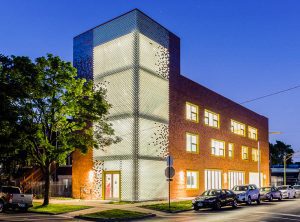Blending Old Brick with Modern Design
An old brick wall carries stories in its surface. Rough textures, faded colors, and uneven edges show the marks of time, giving it a strength and character that smooth plaster or fresh paint can’t match. But brick doesn’t have to feel locked in the past. With thoughtful design choices, it can stand as the centerpiece of a modern home, balancing age with new energy.
Brick naturally grounds a room, creating a focal point that draws the eye and anchors everything around it. To let the material shine, the best supporting elements are simple: polished wood floors, sleek furniture with straight edges, and plenty of natural light. Large windows or open frames allow sunlight to highlight every ridge and variation, turning a weathered wall into living art.
Lighting plays a key role in shifting mood. Warm light brings out the earthy glow of brick, making living rooms and dining spaces feel inviting. Cool light reveals sharper details, useful in kitchens and offices where clarity matters. Accent lighting, such as spotlights or hidden LED strips, can highlight particular sections and transform the wall into a design feature after dark.
For those who love the look of brick but lack an exposed wall, thin brick provides a flexible solution. Made from real brick sliced to a slimmer profile, it carries the same character as full brick but can be installed almost anywhere—on drywall, concrete, wood, or even exterior siding. It works in tight spaces, serves as a backsplash in kitchens, wraps around fireplaces, or creates accent walls in bedrooms and hallways.
Balancing brick’s rugged presence with modern comfort means adding softness where it’s needed. Rugs, fabric chairs, and natural textiles like linen or cotton offset the hardness of masonry. Smooth finishes—glass tables, stone counters, or light wood shelving—introduce contrast without overpowering the wall. Clean-lined furniture keeps the room from looking busy, letting the brick do most of the talking.
Outdoors, brick continues to shape space with strength and durability. A patio edged with low brick walls feels private and structured, while planters and short columns tie the garden to the house. Adding greenery softens the edges—climbing vines, shrubs, and seasonal flowers break up solid surfaces. At night, lights placed at the base of a wall or along a walkway emphasize texture and create a warm, inviting glow.
Color also changes the story brick tells. Original red or brown bricks keep their classic, authentic feel, especially when paired with wood beams or metal accents. Whitewashing brightens spaces and works well in smaller rooms that need lightness without losing texture. Darker shades like charcoal or black create bold statements, best reserved for feature walls or well-lit areas. When blending old and new sections of brick, a soft wash of gray or off-white can unify tones and smooth transitions.
Maintaining and updating brick is as important as styling it. Cracks should be sealed, mortar refreshed, and surfaces cleaned before making color changes. Breathable finishes, such as limewash, protect the wall while letting it release moisture naturally.
In the end, brick is more than just a wall covering—it’s a partner in design. Whether left in its raw form, updated with thin brick, or brightened with new finishes, it adds permanence, texture, and warmth. Combined with modern lines, careful lighting, and a touch of softness, it transforms from old structure to timeless statement, carrying history forward into the present with quiet pride.

